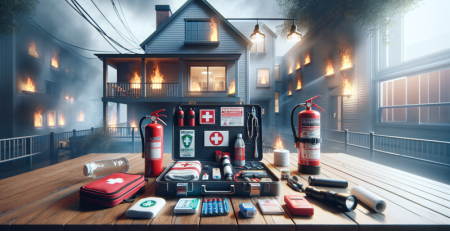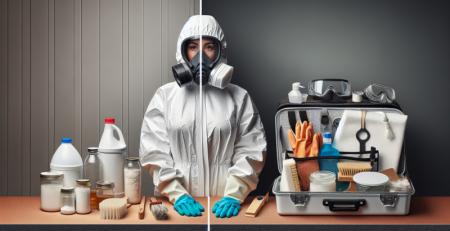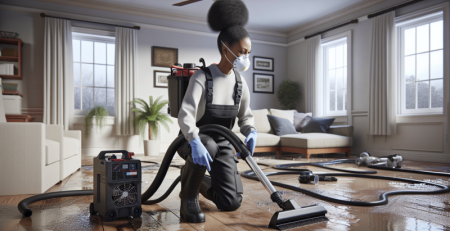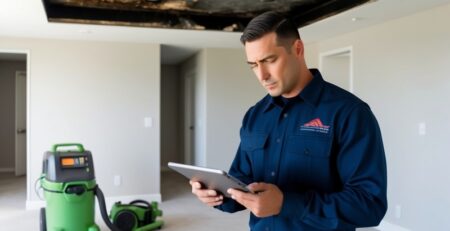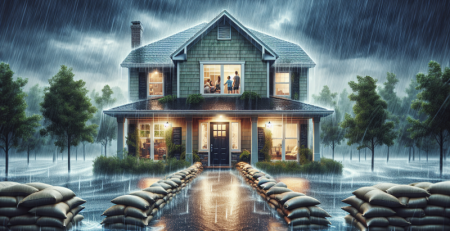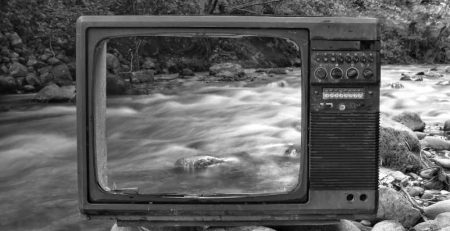Essential Steps for Preparing for Flood Season
As flood season approaches, it’s crucial for homeowners and property managers in Central and Northern New Jersey to take proactive measures to protect their properties from potential water damage. At Kraus Restoration, NJ’s leaders in water damage restoration, we understand the importance of being prepared for the unexpected. Our mission is to assist those who have experienced property damage due to water, mold, fire, or smoke, ensuring a swift return to normalcy. In this blog, we will outline essential steps for preparing for flood season, including creating an emergency plan, securing your property, and understanding the importance of professional water cleanup services. With our 24/7 emergency services and IICRC certified experts, you can trust that Kraus Restoration is here to help you navigate the challenges of flood preparedness and recovery. Stay informed and ready to protect your home from the devastating effects of flooding.
Create a Comprehensive Emergency Plan
Creating a comprehensive emergency plan is a critical step in preparing for flood season. Floods can occur with little warning, and having a well-thought-out plan can make a significant difference in ensuring the safety of you and your loved ones. An effective emergency plan should encompass various aspects, including risk assessment, communication strategies, evacuation routes, and resource management.
First and foremost, it is essential to assess the flood risk in your area. According to the National Oceanic and Atmospheric Administration (NOAA), floods are the most common and widespread natural disaster in the United States, causing an average of $8 billion in damages annually. Understanding the specific risks associated with your location can help you tailor your emergency plan to address potential flooding scenarios. Utilize resources such as FEMA’s Flood Map Service Center to determine if your home is in a flood zone and to understand the historical flood patterns in your area.
Once you have assessed the risk, the next step is to establish a communication plan. This plan should include a list of emergency contacts, including family members, neighbors, and local emergency services. It is advisable to designate a family member or friend who lives outside the flood zone as a point of contact. In the event of an emergency, this person can help coordinate communication and provide updates. Ensure that everyone in your household is aware of the communication plan and knows how to reach each other during a flood event.
Evacuation routes are another crucial component of your emergency plan. Familiarize yourself with the safest routes to higher ground and ensure that all family members know these routes. It is also wise to have a backup plan in case your primary route is blocked. Keep in mind that floodwaters can rise quickly, so it is essential to act swiftly when an evacuation order is issued.
In addition to evacuation routes, consider the resources you will need during a flood. This includes creating an emergency supply kit that contains essential items such as non-perishable food, water, medications, flashlights, batteries, and first aid supplies. The American Red Cross recommends having at least a three-day supply of food and water for each person in your household. Additionally, don’t forget to include supplies for pets if you have them.
Another important aspect of your emergency plan is to stay informed about weather conditions and flood alerts. Sign up for local weather alerts and monitor news sources for updates. The National Weather Service provides timely information about severe weather, including floods, which can help you make informed decisions about when to evacuate or take other protective measures.
It is also beneficial to conduct regular drills with your family to ensure everyone knows what to do in the event of a flood. Practice evacuating your home and using your emergency communication plan. This will help to reduce panic and confusion during an actual emergency.
Finally, review and update your emergency plan regularly. As circumstances change, such as new family members, changes in your living situation, or updates in local flood risk, your plan should be adjusted accordingly. Keeping your emergency plan current will ensure that it remains effective when you need it most.
In summary, a comprehensive emergency plan is vital for preparing for flood season. By assessing risks, establishing communication strategies, planning evacuation routes, gathering necessary resources, staying informed, conducting drills, and regularly updating your plan, you can enhance your preparedness for flooding events. Remember, the key to effective emergency management is proactive planning and preparation.
For more information on flood preparedness and recovery, you can visit the following resources:
- FEMA Flood Information
- NOAA Flood Resources
- American Red Cross Flood Preparedness
For additional assistance with water damage restoration and recovery, consider reaching out to Kraus Restoration. They offer expert services to help you navigate the aftermath of flooding and restore your property effectively.
Assemble a Flood Preparedness Kit
Preparing for flood season is crucial for ensuring the safety and well-being of you and your loved ones. One of the most effective ways to safeguard against the unpredictable nature of floods is to assemble a comprehensive flood preparedness kit. This kit should be tailored to meet the specific needs of your household and should include essential items that can help you survive during and after a flood event.
Start by selecting a sturdy, waterproof container to store your kit. A plastic bin with a tight-fitting lid or a waterproof backpack can work well. The first items to include are water and non-perishable food. It is recommended to have at least one gallon of water per person per day for at least three days, along with a supply of ready-to-eat meals, energy bars, and canned goods. Don’t forget to include a manual can opener if you pack canned food.
Next, consider adding a first aid kit that contains basic medical supplies such as bandages, antiseptic wipes, pain relievers, and any prescription medications that you or your family members may need. It is also wise to include personal hygiene items such as soap, hand sanitizer, toothbrushes, and sanitary supplies.
In addition to food and medical supplies, you should pack important documents. Keep copies of identification, insurance policies, medical records, and any other essential paperwork in a waterproof bag or container. This will ensure that you have access to critical information in case of an emergency.
Don’t forget to include tools and supplies that can assist you during a flood. A flashlight with extra batteries, a multi-tool, and a whistle can be invaluable. A battery-powered or hand-crank radio will help you stay informed about weather updates and emergency instructions.
If you have pets, make sure to include supplies for them as well. Pack food, water, medications, and a leash or carrier for your pets. It is important to consider their needs during an emergency.
Lastly, consider including items that can help you stay warm and dry. A thermal blanket, rain gear, and sturdy shoes can make a significant difference in your comfort and safety during a flood.
As you assemble your flood preparedness kit, remember to review and update it regularly. Check expiration dates on food and medications, and replace any items that have been used or that are no longer in good condition. By taking the time to prepare a well-stocked flood kit, you can ensure that you and your family are ready to face the challenges that come with flood season. For more information on how to protect your home from water damage, visit our water cleanup services page. If you need assistance with mold or fire damage, check out our mold cleanup and fire cleanup services.
In conclusion, preparing for flood season is a crucial step in safeguarding your home, family, and community. By taking proactive measures such as creating an emergency plan, assembling a disaster supply kit, and staying informed about weather updates, you can significantly reduce the risks associated with flooding. Additionally, elevating your property, securing important documents, and understanding your insurance coverage can provide added layers of protection. Remember, preparation is key; the more you plan ahead, the better equipped you will be to handle the challenges that come with flood season. Stay vigilant, stay informed, and take action now to ensure your safety and resilience when the waters rise.
